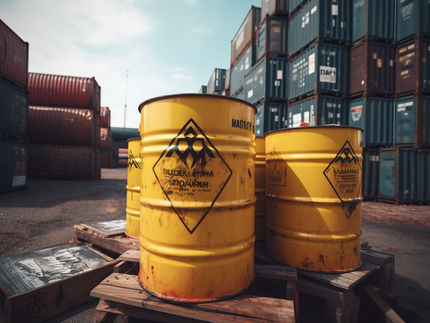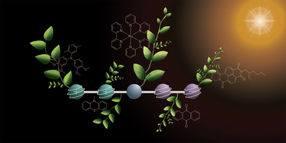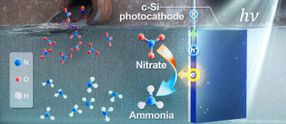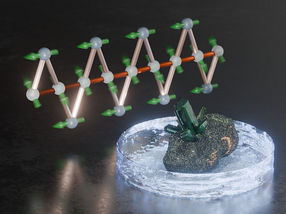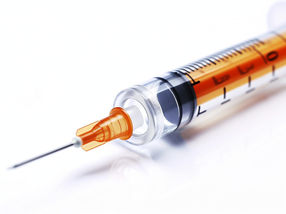Poison from the past
Volatile mercury from historic mirrors
Advertisement
Ancient mirrors still exist which were made by applying mercury to a thin tin foil. Although their production was banned in 1886, owning one has never been prohibited. Over the years, the compound of tin and mercury (the so-called tin amalgam) corrodes or detaches from the glass, the reflection layer becomes blind and the mercury is released producing a toxic vapour. Ways of preventing this and for restoring old mirrors has been studied in a research project by BAM Federal Institute for Materials Research and Testing.
BAM’s experts measured the emissions from tin amalgam mirrors and clearly demonstrated that these mirrors emit mercury vapour. "The concentrations measured depend very much on the size of the mirror surface, the dimensions of the room and whether it is frequently aired," says project engineer Manfred Torge. Mercury mirrors can be recognised by a rather greyish brown light reflection compared to the yellow-green reflection of silver nitrate mirrors.
Two methods can be considered to prevent or at least reduce the emission of mercury into the environment. One is to seal the back of the mirror with an impermeable layer such as a thin glass pane. A second is for mercury vapours to be bound by absorptive materials. Suitable materials include paper which has been sputtered with gold, and absorber marketed under the trade name of Mercurisorb®, or absorptive materials like iodised active carbon.
The experiments showed that using glass panes has little effect since the joints at the edges of the mirror remain permeable to mercury. The scientists recommend placing paper sputtered with gold between specialised very thin synthetic textile. To prevent mercury beads from escaping from very badly damaged mirrors, BAM’s experts suggest, in the journal Restauro, placing Mercurisorb®, tin or zinc rods into the frame at the bottom in a special arrangement. Absorptive materials and the mirror must not come into direct contact with each other.
BAM’s experts have tested the amount of mercury vapour which is emitted into the air in rooms in the New Palace museum in Potsdam. There are a large number of historic mercury mirrors in Frederick the Great’s concert room and even more are stored in a depot. The mercury emissions measured in the concert room can be considered to be very low and are approximately a factor of 50 below the limit (0.35 ng/l) recommended by the World Health Organisation WHO. Nor was the limit reached in the depot area. "The air exchange rate is relatively high in the large mirrored halls in Potsdam so mercury does not accumulate and does not exceed stipulated limits" says graduate conservator Sonja Krug. "A very large mirror in a small enclosed space, however, may produce a different result."
Since the production of mercury mirrors is now prohibited, it may only be used in exceptional circumstances. Thus, for example, tin amalgam layers were restored and new mirrors were produced using the historical methods when establishing the historical Green Vault in the rebuilt Royal Palace in Dresden in 2006. Modern technology in museums, as exists in the Green Vault, filters all pollutants from the air, so they are kept away both from visitors and works of art.



